Fostering bonds with students through stories
Posted by Remya Padmadas on June 28, 2017Riddhi Dastidar recently joined Pratham Books as Outreach Manager. Here she writes about our recent workshop in Delhi, with Humana India.
On a scorching summer day in June, we found ourselves in the winding bylanes of Kishangarh in Delhi, looking for the Humana India Office. We entered to wooden floors, quiet reading spaces filled with books in multiple nooks and a massive German Shepherd dog draped languorously across the gate to welcome us in.
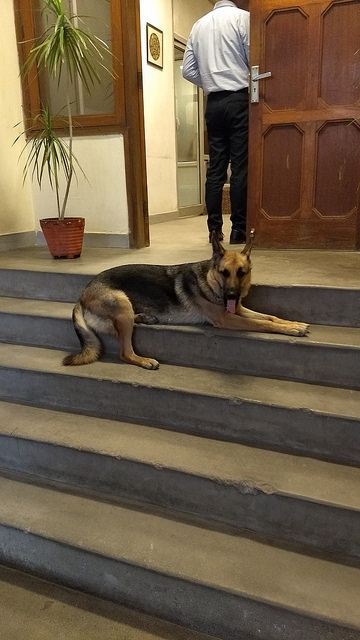
Humana People to People India is a part of Humana International's network of 31 organisations in Europe, Africa, Asia and the Americas working across a range of issues from from health to microfinance. Our overlap in interest comes from their work in Education.
HPPI's educational programmes aim to equip people with knowledge and skills to break the cycle of poverty and fulfill their potential. Their five programmes are Necessary Teacher Training Programme (NeTT), Academy for Working Children, Girls Bridge Education, Step up Centers and Prarambh. NeTT and Prarambh focus on incubating quality teachers. Humana had invited their NeTT master trainers from different states to spend the day with us to know about StoryWeaver and how can it be used to bring in a reading culture in the classroom, as well as serve as a resource pool for our teachers. We also had trainers from other organizations like Stir Education and Pratham who added to the diversity of the group.

We started by getting to know the workshop participants a little better by discovering their hidden talents. Someone mentioned they were good at working with special needs children while another teacher found travelling interesting. Stories give way to many emotions and what better way to establish that than to begin the session with a story? The audience giggled and winced and tried to come up with a solution to Bheema’s problem in the process realising with us how important stories are to classrooms!
How stories help kindle curiosity and develop lateral thinking in children.
After we walked through how StoryWeaver works, our philosophy of reaching as many children in need as possible in their native tongue, and hence our embrace of Creative Commons, it was time for the teachers to get their own hands dirty. They practiced curating lists of stories on specific themes (from Math concepts through biryani making to a Level 1 reading on Traffic lights). They got into groups to take a stab at translating stories into Hindi and finally even creating their own story from our set of open illustrations.
To break down the concept of ‘filters’ on StoryWeaver to help select the desired kind of tale we drew a parallel to online shopping - Amazon and Flipkart being commonly recognized.
An interesting story we explored brought out the critical role illustration can play in a book. We read 'दीदी का रंग बिरंगा खज़ाना', and the teachers pointed out that as Didi became happier, the book bloomed from black and white into colour - hence even a child struggling to read the words would be able to grasp what was happening!
By the end of the workshop we had a couple of first-time story-writers in our midst. The teachers were beginning to share the challenges of balancing something as ‘inessential’ and essential as the time to read for joy in class with the demands of administrative work and completing the syllabus. Waseem, one of the trainers from Stir mentioned that the main reason we work is actually the children. Very often lost in the pressures of checking very real demands and tasks off the checklist, we forget the heart of it - which is the relationship being built with the child. He pointed out that stories could be a great option to reverse this disinvestment and foster strong relationships.
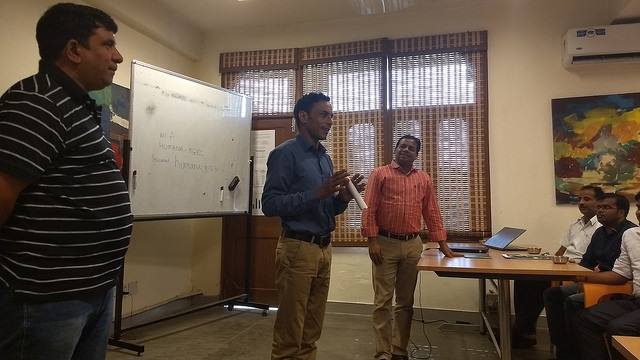
We came out of the workshop with many of the teachers coming up to us to ask for follow-up training with their organisations, and excited to see how they would go on to integrate stories into making different kinds of academic learning interesting - be it learning about division through biryani or just taking 20 minutes out of the day to Drop Everything And Read!
To see more images from the workshop, click here.
If you would like us to conduct a workshop with your organisation, drop us an email at [email protected]
Be the first to comment.
Friday Flashback with the #6FrameStoryChallenge!
Posted by Remya Padmadas on April 15, 2016In January, 2015, Pratham Books sent out a big, bold ask into the universe! We asked illustrators to delight millions of children by creating a story in 6 frames and donating it for free under the CC-BY 4.0 license! The illustrations were then to become a part of an open-source, digital repository of magic! Stories and illustrations in languages from around the world, all openly-licensed and available for free.
Yup! You guessed it: StoryWeaver! But back then, it was just a twinkle in the eye of Pratham Books’ ambitious team!
We opened the challenge up to budding, aspirational and professional illustrators above the age of 16 and found 8 hugely talented illustrators (we called them 'Illustrator Gurus') who were more than happy to judge the best entries and also champion the cause by contributing a #6framestory. Winning entries were promised a pairing with published authors who would weave a story around their illustrations! (If you want to read more about the contest, click here.)
We shared a word cloud for the illustrators to use as themes and even wrote 6 simple narratives and shared them online for those illustrators who wanted a ready-made story.
The response was overwhelming and in a sense, a true indication of the immense potential of community and collaboration! What had started as an experimental campaign soon blossomed into a carnival of art, birthing 450+ new illustrations. From watercolour and digital art, to simple black and white drawings, the entries were hugely diverse.
Archana Sreenivasan, Niloufer Wadia and Jithin Jacob were the three winners of the contest. You can read the stories created with their illustrations here, here and here. Some of these illustrations were used by Pratham Books to create delightful new stories (in English and Hindi) for early readers.
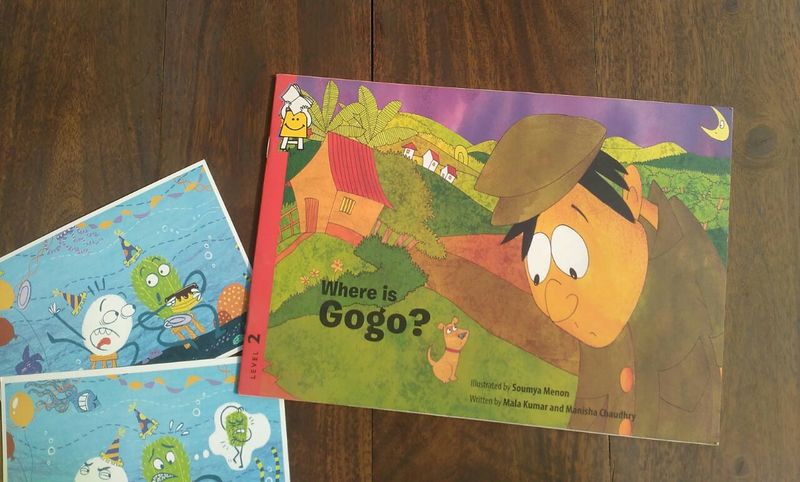
While we're in the process of uploading all the #6frame artwork to StoryWeaver, we thought it would be wonderful to look back at some of the entries submitted for the contest and share them with our ever-growing community of children, authors, illustrators, translators, parents and educators!
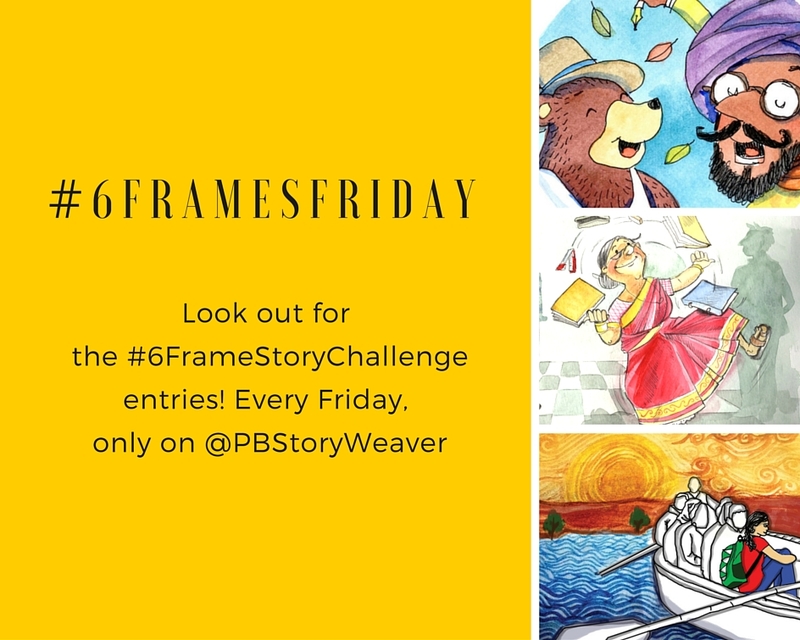
Every Friday, we’ll be sharing an illustration from the #6FrameStoryChallenge. So look for #6FramesFriday on @PBStoryWeaver on Twitter and Instagram and Facebook.
Tell us which ones you love, create stories with them on StoryWeaver, or just lose yourself in their beauty! See you every Friday! We promise to make your weekend fun.
Be the first to comment.#FreedomtoRead2020: Azad India Foundation on creating 70+ Surjapuri bilingual books
Posted by Remya Padmadas on February 21, 2020
Azad India Foundation (AIF) was founded by Yuman Hussain in 1998 to seed initiatives in education & primary health care. The organisation's activities reach out to marginalised women, adolescents and underserved children from rural and urban areas of the Kishanganj district in Bihar.
We are delighted that AIF is participating in our Freedom to Read campaign for the second year in a row. They are also our first partner-translator this year to have completed their goal of translating 70+ Surjapuri bilingual books (English-Surjapuri and Hindi-Surjapuri). In an email interview, Yuman Hussain, Executive Director of Azad India Foundation, tells us about the importance of bilingual books and how these books have helped children read and learn in their mother tongue.
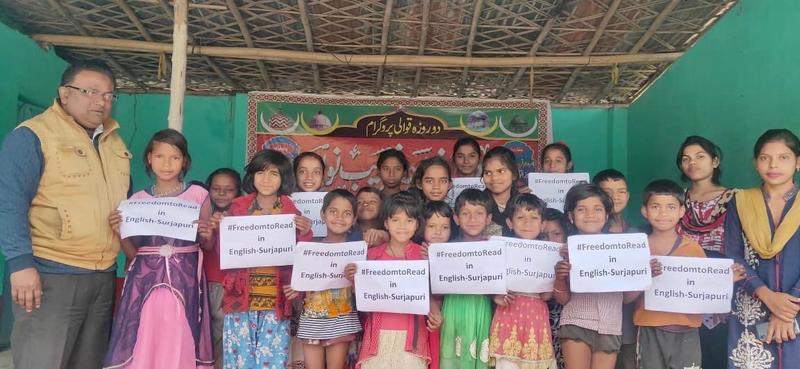
The Azad India Foundation team and the children in their learning centre in Bihar
“Azad India Foundation is delighted to be part of the #FreedomToRead campaign for the second year in a row. Foundational learning skills like reading are essential for a child’s progress. StoryWeaver is a unique platform that allows children to learn these skills joyfully in their mother tongue.”
- Yuman Hussain, Executive Director, Azad India Foundation
We are delighted that Azad India Foundation has participated in the Freedom to Read campaign for the second year in a row! How does it feel to be a part of the campaign for the second time?
It feels great to be part of the Freedom to Read campaign once again and to complete the translations well before time! The credit goes to the team. It was quite challenging this year as we chose to create bilingual books in English-Surjapuri.
Do tell us about the Surjapuri community and language: What is the mother tongue footprint and what resources are currently available? What are the challenges faced by Surjapuri children when they enter school?
Surjapuri is a dialect that is spoken in the Seemanchal area comprising Kishanganj, Araria, Katihar and Purnia of Bihar, and with minor variations in some parts of Bengal, neighboring Kishanganj.
I am currently not aware of any resources that are available for children in the local dialect of Surjapuri. In most schools, children learn in Hindi. In some schools, they are also taught in Urdu.
Can you tell us a little bit about how the Surjapuri books created from last year’s campaign are being used? Do the children have any favorites?
We have taken printouts of the Surjapuri books from last year’s Freedom to Read campaign and these are being used in classrooms for supplemental reading. Some of the STEM books are being used to explain maths and science concepts. The kids really like Gappu Can’t Dance (Gappu nachwa ne sakche) and enjoy enacting it in class. However, Fat King Thin Dog (Moto Raja Patla Kutta) is their all-time favourite!
This year, you’ve chosen to create bilingual books in English-Surjapuri and Hindi-Surjapuri. Could you tell us about the need and benefits of these books?
Bilingual books help children understand concepts easily, and if created in the local dialect, then it becomes so much easier for children to learn. The English-Surjapuri books are great teacher learning material (TLM) for non-Hindi or English speakers. Through StoryWeaver, we have access to thousands of free storybooks. We are aiming to create at least 200 books in Surjapuri on the platform.
We do not have reading material/storybooks in English for our children, so these bilingual books for level 1 and 2 are helping our children learn and read English. Aakansha, our India Fellow at AIF, helps with the reading sessions in English–Surjapuri.
Do tell us about your team who worked to create these 70+ Surjapuri bilingual books, and how they went about the translation process.
We have an enthusiastic young team of translators: Chand Quasar, Juhi and Saqlain, supervised by Muzzamil, who rose to the challenge once again. First, they translated storybooks from Hindi to Surjapuri. Then, I added the English version and uploaded the books on StoryWeaver. It was slightly challenging finding the corresponding words/sentences in English that matched the Surjapuri version, but it was fun.
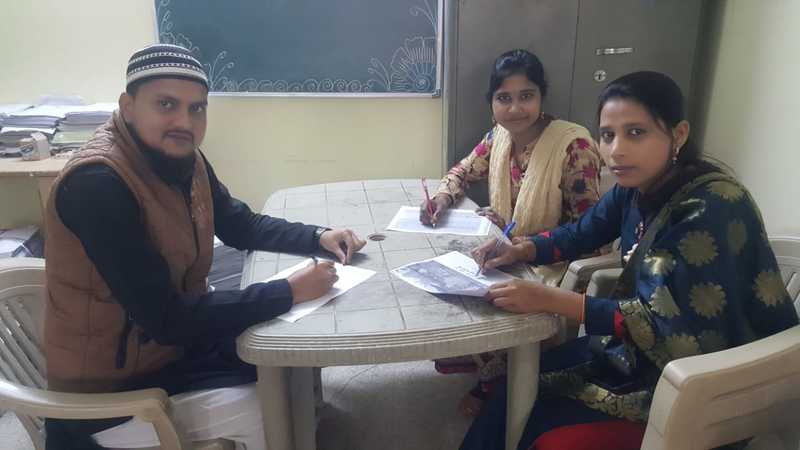
Azad India Foundation's Team Badhte Kadam
Thank you so much, Azad India Foundation, for giving children the #FreedomToRead in Surjapuri!
You can read all the storybooks translated by Azad India Foundation here.
Read more about the organisation here.
Do join the conversation by leaving your thoughts in the comments section below. You can also reach out to us through our social media channels: Facebook, Twitter and Instagram.
Be the first to comment.